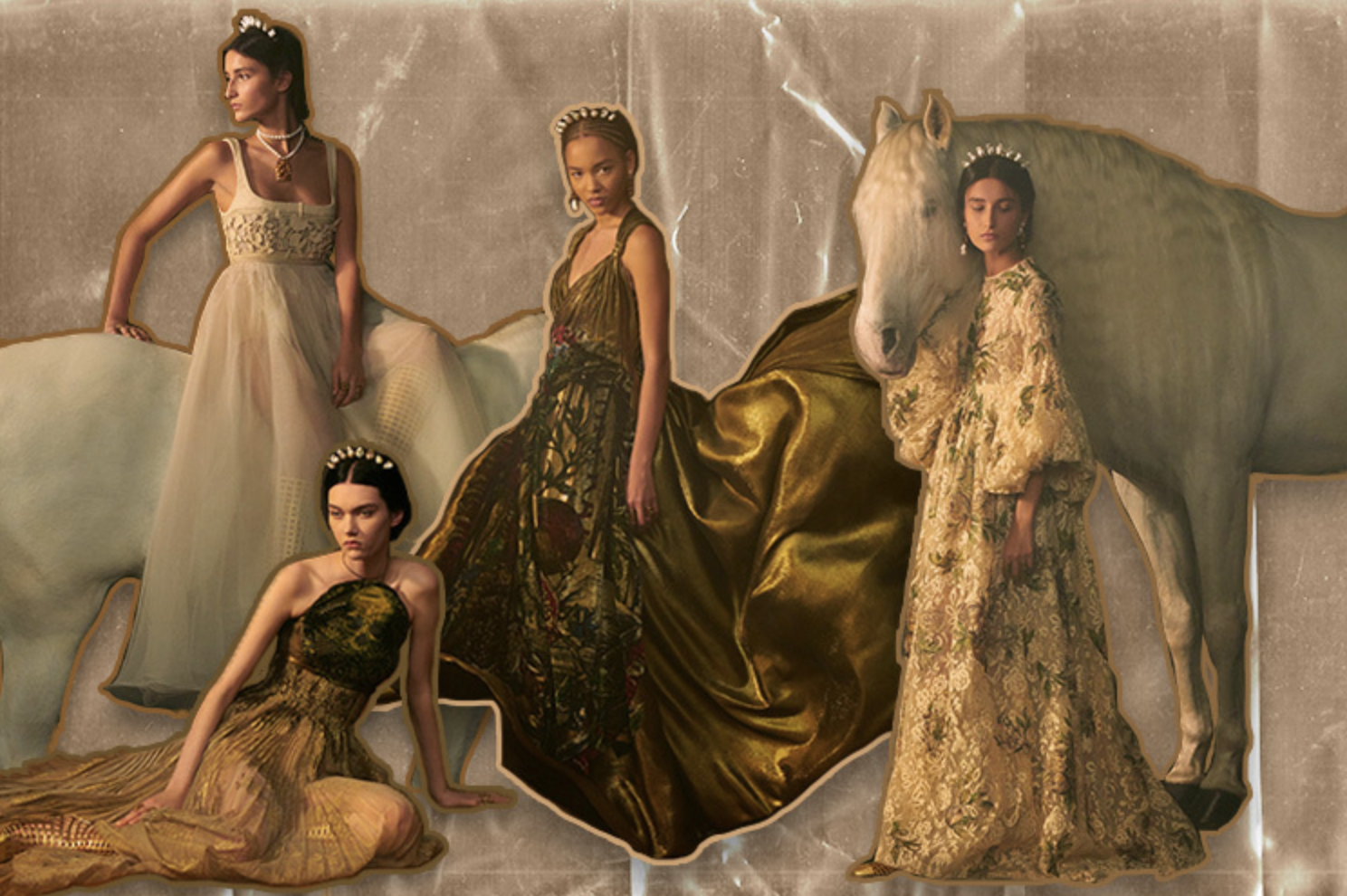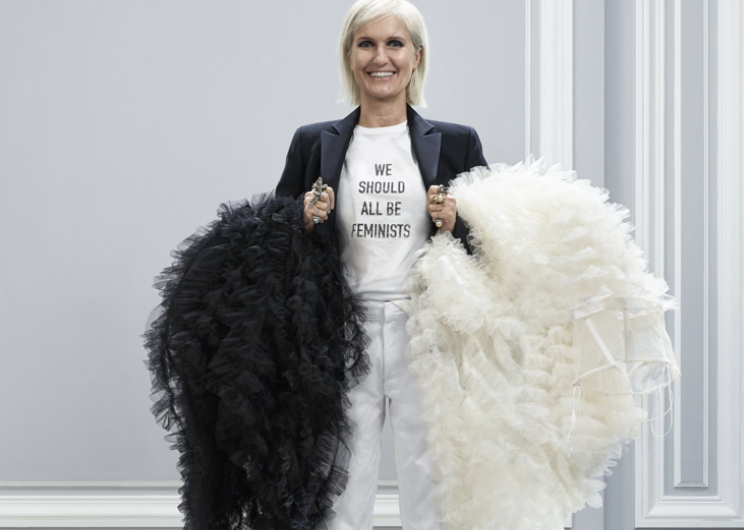Christian Dior’s Spring 2021 Show: A Fashion Journey back to the Middle Ages
Graphic by Margeaux Rocco
When watching the recently released Dior Haute Couture show from our homes, it might seem that the short film is about a fairy tale set at a medieval castle where all the characters wear ultra-fancy gowns. However, this would be unlike Maria Grazia Chiuri, the House of Dior’s creative director, who in past collections has taken inspiration from historical events or objects to insert a meaningful social message into what might otherwise be seen as a futile and elite body of fashion work.
In the 15-minute video, Chiuri touches on themes of diversity and inclusion regarding race, sexuality, nationality and economic standing as well as the COVID-19 pandemic— all while including aspects of Dior’s history.
Let’s start with a general picture. In the short movie, which is titled “Le Château du Tarot,'' an old lady plays a set of tarot cards for a woman who is looking for self-discovery. After choosing the High Priestess card, the woman enters what seems to be a medieval, gloomy, mysterious and luxurious castle where all characters wear Dior’s haute couture clothes. In addition to having a racially diverse cohort of models, queerness is also addressed. At the end of the video, it might be concluded that the protagonist encounters her true self when kissing another version of herself in a bathtub and consequently discovers her own sexuality.
Image via Christian Dior on Youtube
Chiuri is considered to be a strong feminist activist in the fashion realm. For example, in the Spring 2027 collection, her T-shirt made a straightforward statement.
Image via Harper’s Bazaar
Another example of Chiuri’s feminist contributions to Dior’s collections is the the 2018 cruise collection, which was inspired by Motherpeace’s feminist tarot cards according to Alice Cavallo’s article at L’Officiel. Designed by Karen Vogel and Vicki Noble in the 1970s, this tarot deck was strongly inspired by the Goddess movement and second-wave feminism. The tarot theme was repeated in the 2021 collection as it was inspired by one of the oldest tarot sets: the Visconti-Sforza deck, made by the Italian artist Bonifacio Bembo circa 1400. Chiuri invited the contemporary Italian artist Pietro Ruffo to design the collection’s gown patterns with these late medieval artworks and motifs in mind.
This medieval tarot deck inspiration is related to the personal histories of both Chiuri and Christian Dior, the founder of the House of Dior. First, Chiuri’s birthplace is represented by the Italian provenance of the card set. Second, according to Alice Cavallo’s article, before each show, Dior visited a clairvoyant to read tarot for him. He was highly superstitious and believed in destiny and chance. According to Sarah Mower in a 2021 Vogue article, this interest came from when Christian Dior’s sister Catherine, who was part of the French Resistance, disappeared during World War II. When she returned, Catherine's love of gardening inspired Dior to incorporate flowers in his clothes for women. This botanical theme is recurrent in late medieval artworks such as the Visconti-Sforza deck as it relates to the medieval tradition of depicting the locus amoenus. The latter refers to an idyllic and idealized place of safety and comfort, and in medieval times it was portrayed as a space for religious contemplation and self-reflection. Chiuri and the Dior creative team were inserted into the mystical world of tarot to design this unique collection.
Image via Christian Dior on Youtube
Besides being located near Florence, the castle where the show video was filmed does not mirror the French-Italian connection of the Dior House. The building is based on the Moorish architectural style and its intricate design and multiple colors reflect the material richness and creativity of this collection. Again, Chiuri attempts to break with the traditional and conservative European stereotype of the Dior brand, especially haute couture, which is highly exclusive and expensive. In addition to using the video to highlight the beauty of a non-European culture, Chiuri recruited small artisans and fashion businesses to apply their meticulous and specific skills to strengthen Dior’s savoir-faire team in the making of this collection. For example, according to Lorena Meouchi’s article at L’Officiel, Jean-Pierre Ollier utilized the meticulous découpage technique from the 18th century of making handmade and painted motifs which are then sewed onto dresses. Moreover, the iconic Miss Dior dress was reinvented by the French textile artist Atelier Paloma using artisanal skills to embroider flower motifs on the gold-made dress.
Image via Christian Dior on Youtube
According to Tim Husband in a 2016 blog post for the Metropolitan Museum of Art, the contemporary association of tarot cards with fortune-telling and the occult only started in the 19th century and therefore is not connected with the Visconti-Sforza deck. Interestingly, the French roots of the house of Dior appear again as the French attributed the esoteric characteristic to these cards and named them tarot. However, fate is always present in the fashion world, as designers have to predict trends and what consumers will appreciate in a future collection. According to Chiuri in an interview for a 2021 Vogue article, the short movie depicts a “labyrinth which represents an interior trip. When she meets each of [the tarot] figures, she has to reach a decision about her life. And, on the other hand, she meets aspects of her own personality and learns not to be scared of the future… Well, the ability to foretell the future — what will move people to want to buy in a few months’ time — is ever-present in the job description of a designer.”
Beyond the fashion world, tarot can be used by anyone, regardless of profession and interest, as a way to predict the future and perhaps find hope in uncertain situations of life.








